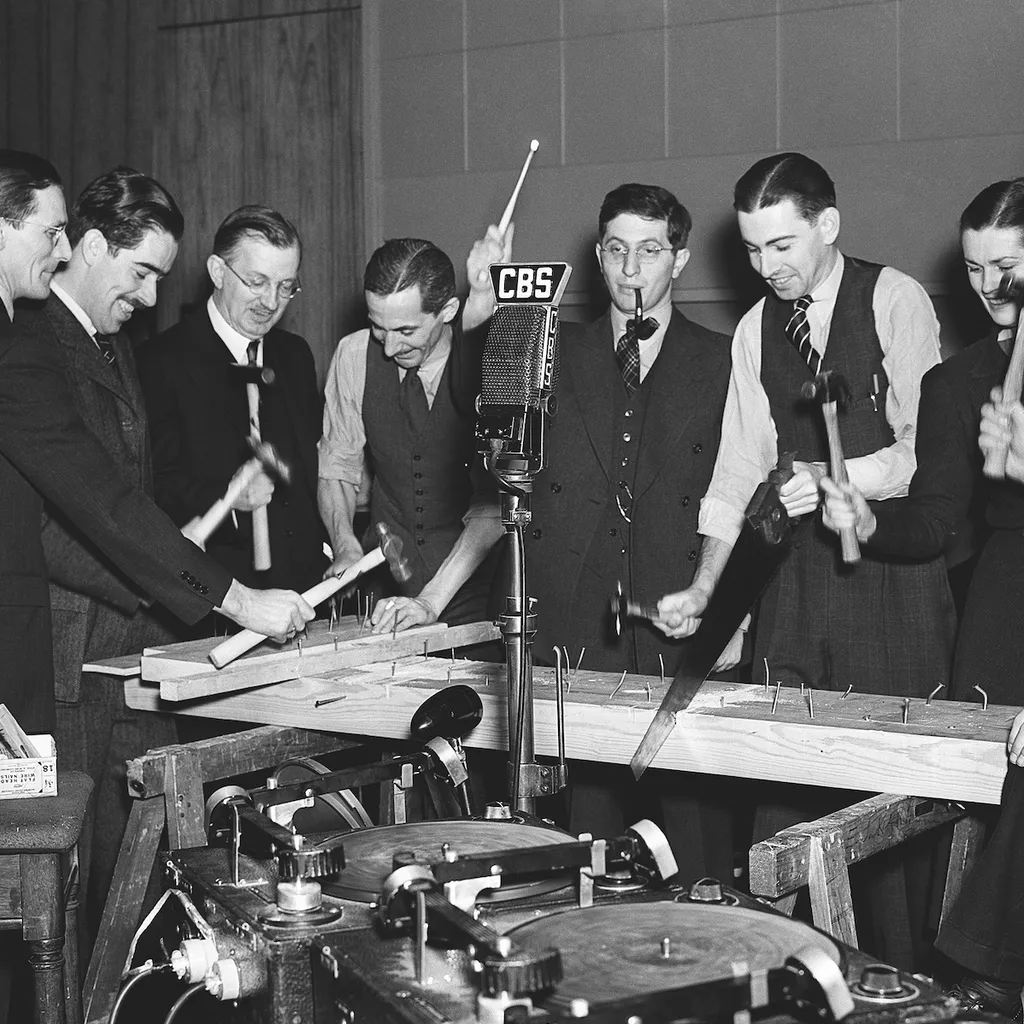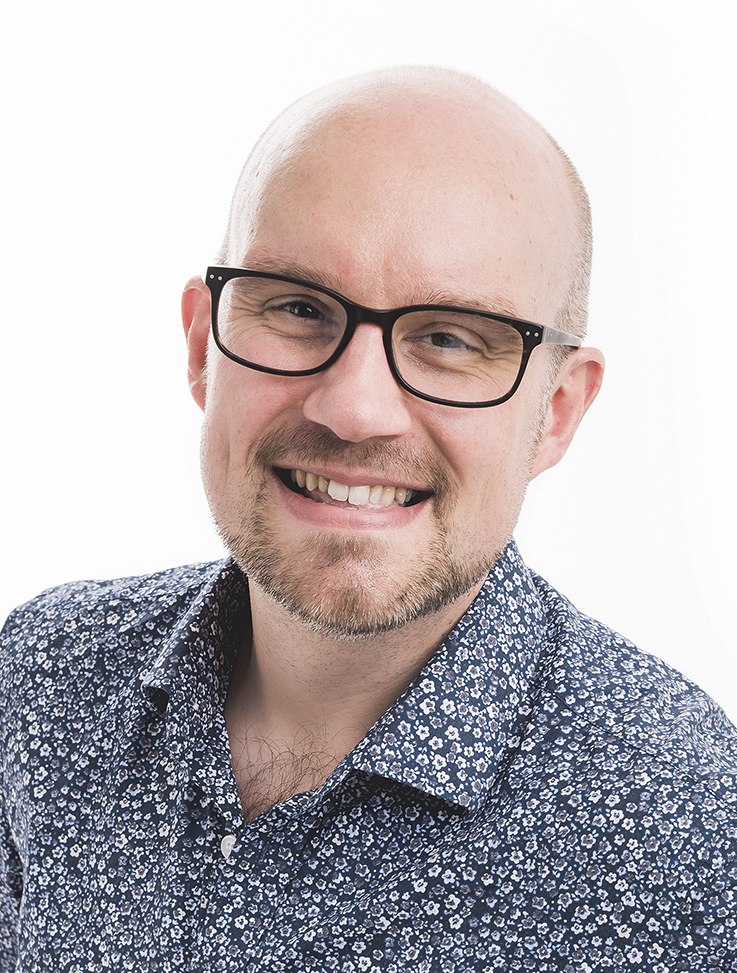A young woman steps into a motel shower; she smiles with some relief, the warm water seemingly washing away her sins – she has stolen a lot of money, but has decided she will go home and return it tomorrow. Beyond the shower curtain the door opens and a dark figure approaches slowly before ripping back the curtain; with it comes a torrent of shrieking strings, the musicians’ slashes and stabs working in unison with those of the faceless, knife-wielding maniac. When it’s done, as the sounds of the cellos ebb away, so too does the woman’s life.
What was Bernard Herrmann and Alfred Hitchcock's most famous collaboration?
Marion Crane’s demise at the hands of (spoiler alert) Norman Bates is one of the most famous scenes in cinema history. But this shocking moment from early in Alfred Hitchock’s 1960 masterpiece, Psycho, could have been very different. Hitchcock didn’t want music in the scene, but composer Bernard Herrmann felt he knew better (as he often did) and wrote some anyway. Herrmann was almost 20 years into his film career by this point, so he had more than a sure grasp of his craft and Hitchcock was quickly convinced. They wouldn’t always see eye to eye, though, famously going their separate ways just a few years later after nine legendary films together.
What was Herrmann's first film score?
Herrmann’s first music for the big screen was as groundbreaking as the film it was written for: Orson Welles’s Citizen Kane (1941). He had composed and conducted music for Welles’s famous ‘Mercury Theatre on Air’ at CBS Radio in New York, including the now infamous 1938 War of the Worlds episode that sent many listening Americans into a spin thinking the East Coast was under attack.
Much of Herrmann’s work for radio has been lost, but it was a fertile training ground for a budding film composer, requiring the writing and conducting of a lot of narrative music week after week, much of it broadcast live. Ingenuity was the order of the day, and that creative work ethic would serve Herrmann’s vision of what a film score could, and should, do.
For Welles’s film he created an orchestral atmosphere and textures hitherto unheard on screen, deployed as a series of short, transitionary cues and utilising a bespoke palette of sounds where required – as opposed to simply writing for the standard symphony orchestra that was, by then, the sound of Hollywood.
Who was Bernard Herrmann?
The son of a New York optometrist, Herrmann played violin and piano as a child and his passion (obsession) for literature and music resulted in something of an encycopedic knowledge – thus musical studies at Juilliard and NYU (the former especially) proved to be something of an annoying formality. Herrmann cast himself as a sophisticate, absorbed in his own intellectualism and never happier than when sharing his knowledge or opinions with others.
He was famously outspoken, his musical genius matched only by his general tactlessness, fiery temper and desire for perfection. He was passionate to a fault and his own worst enemy when it came to forming relationships (professional and personal).
Herrmann’s dream of being a composer-conductor didn’t take long to be realised; following his early exploits with Aaron Copland’s ‘Young Composers’ group and initial steps onto the podium with the New Chamber Orchestra, he found himself working at CBS radio as an assistant to the station’s music director, Johnny Green (who would himself end up a Hollywood legend).
Though he had written, and continued to write, concert pieces – such as his first published work, 1935’s Sinfonietta, Herrmann’s innate sense for drama meant he was a perfect fit for composing radio scores. The job also required him to conduct, arrange and curate programmes and he enjoyed a long tenure during the 1930s and ’40s, one which would see him become the CBS Symphony Orchestra’s music director.

Having an orchestra at his disposal and a somewhat captive audience at home meant Herrmann not only had an outlet for his own music, but a means to share his passion for new music. As such, his American radio (and concert) audiences heard a wealth of works by homegrown composers, such as Ives, not to mention music from across the Atlantic, by the likes of Vaughan Williams, Delius, Arnold Bax and Gerald Finzi. They were all heroes to Herrmann, and he met or got to know them all.
Herrmann’s love of England ran deep and he made a first visit as a guest conductor in 1937, followed by a second in 1946 – at the invitation of John Barbirolli, with whom Herrmann had struck up an unlikely friendship while the conductor was with the New York Philharmonic. The trip saw him conduct two concerts with the Hallé in Manchester and one with the BBC Symphony in London for a Home Service broadcast. He also took the opportunity to soak up the atmosphere of Brontë country and walk the Yorkshire moors, the setting of his in-progress opera of Wuthering Heights.
That work would occupy a large amount of his time in the 1940s, the composer obsessing over its creation in much the same way that he had gone about setting Moby Dick in 1937/38. Herrmann’s cantata based on Melville’s man-versus-nature epic saw him undertake an almost total-immersion approach, living and breathing the world of the novel as he adapted it (with co-librettist Clark Harrington). Melville and Brontë’s obsessive characters and bleak landscapes suited Herrmann’s melodramatic flair in the same way Welles and Hitchcock’s did; Herrmann matched them with his own idiosyncratic emotional heft, brooding darkness and moments of great beauty.
When did Bernard Herrmann win an Oscar?
Despite the success of 1941's Citizen Kane and his Oscar-winning score that same year for All That Money Can Buy (aka The Devil and Daniel Webster), Herrmann only actually composed seven complete scores in the 1940s – including 1943’s Jane Eyre and 1947’s The Ghost and Mrs Muir (the latter incorporating the main love theme from his as-yet unheard opera).
It’s almost as if he was holding out to see which way his career was going to go, travelling back and forth to Los Angeles, but maintaining his role at CBS in New York, composing a handful of concert works (including The Fantasticks and For the Fallen) and holding out for higher-profile conducting opportunities. Whether it was the influx of European talent due to the War with Germany, or the fact that Herrmann usually ended up on the wrong side of just about anyone he worked with, he just wasn’t in demand in the concert hall. It was a personal blow.
The 1950s saw Herrmann embrace life as a film (and eventually television) composer, moving to Los Angeles and overseeing the music for 23 films that decade. His opera, Wuthering Heights, was finally completed in 1951 and he considered it his very best work, though it wouldn’t ever be staged in its original form and was only recorded in full over a decade later at the composer’s own expense. That same year he scored Robert Wise’s The Day The Earth Stood Still, crafting typically forward-thinking music for the sci-fi thriller.
What films did Herrmann and Hitchcock work on together?
While considered something of a New York interloper during his first 1940s forays into Hollywood music-making, Herrmann truly established himself in the ’50s as an innovative composer with a distinctive voice. 1955’s The Trouble With Harry was his first film with Hitchcock; they ruffled each others feathers, but made magic on screen with the likes of The Man Who Knew Too Much, The Wrong Man, Vertigo and North by Northwest in the second half of the ’50s. He also found a fine niche as a fantasy composer, scoring Columbia’s The Seventh Voyage of Sinbad and Journey to the Center of the Earth, followed in the 1960s by The Three Worlds of Gulliver, Mysterious Island and Jason and the Argonauts.
Bernard Herrmann makes an appearance in our list of the top 10 film composers of all time.
The ’60s began creatively with Psycho, and personally with a partial relocation to London in 1961. The move became permanent in 1964 when his second marriage broke down; this was soon followed by the breakdown of his partnership with Alfred Hitchcock – the director threw out Herrmann’s music for 1966’s Torn Curtain (which would be scored instead by John Addison) and he became disillusioned with Hollywood’s growing penchant for ‘pop’.
Where did Herrmann live in London?
Life in London with a home beside Regent’s Park suited Herrmann well and gave him the chance to live out his fantasy of becoming an English gent – he joined the exclusive Savile Club and walked his beloved dogs in the park. The move profligated a second wind as a conductor, Herrmann finding himself before the London Symphony, London Philharmonic, BBC Northern, Hallé and Philharmonia orchestras for concerts and broadcasts throughout the decade and into the 1970s, not to mention a steady stream of recordings of his own and others’ music.
The ’60s also saw Herrmann return to composing for the concert hall, with two chamber works and a musical comedy, not to mention a third marriage and something of a cinema renaissance thanks to collaborations with bright young directors like François Truffaut, Brian de Palma and Martin Scorsese. He had received Oscar nominations for his first two film scores, so it was a fitting bookend that, after his death in 1975, he was posthumously nominated for his last two: De Palma’s Obsession and Scorsese’s Taxi Driver.
What is Bernard Herrmann's music like?
Herrmann's music typically features the following stylistic fingerprints:
Unusual instrument combinations
Herrmann was a great experimenter, eschewing the orchestral norms for films as he saw fit; employing, for example, 12 flutes for the opening of Citizen Kane (1941), two theremins and electric bass for The Day The Earth Stood Still (1951), nine harps for Beneath the 12-Mile Reef (1953) and five organs for Journey to the Center of the Earth (1959).
Ostinatos
You don’t find so many melodies in Herrmann’s music, the composer often preferring brief motifs and repeating patterns (or ostinatos) to create drama and energy, often underlining the more psychological aspects of the characters for which he is writing.
Falling to nowhere
Herrmann has a way of drawing the listener into the drama by regularly utilising series’ of descending notes (sometimes with a concurrent set of rising ones) in his scores. The somewhat hypnotic device is altogether unnerving as they generally go nowhere, ever spiralling downwards.
Three notes
Like many a composer, Herrmann re-used bits and pieces of his own work over the years. One particular favourite was an ominous three-note motif which first appeared in his 1935 Sinfonietta. That inspired a portion of his 1960 Psycho score, where it is also very much apparent. He employs it at the end of both his Moby Dick cantata and his final film score, Taxi Driver. John Williams paid tribute to Herrmann by adding the motif into his 1977 score for Star Wars.
When was Bernard Herrmann born?
Bernard Herrmann was born, as Maximillian Herrmann, on 29 June, 1911 in New York. His father Abraham fostered his love of music as a child, and encouraged him to learn the violin.
Was Bernard Herrmann married?
Yes: twice. Herrmann's first wife was Lucille Fletcher, the screenwriter and librettist of his opera Wuthering Heights. However, in 1948 the couple divorced over his affair with her cousin Lucy, whom he married the following year.
When did he die?
Bernard Herrmann died in his sleep in his hotel in Hollywood on 24 December 1975, just a day after the recording for Martin Scorsese’s Taxi Driver, his final film score, has been completed.

